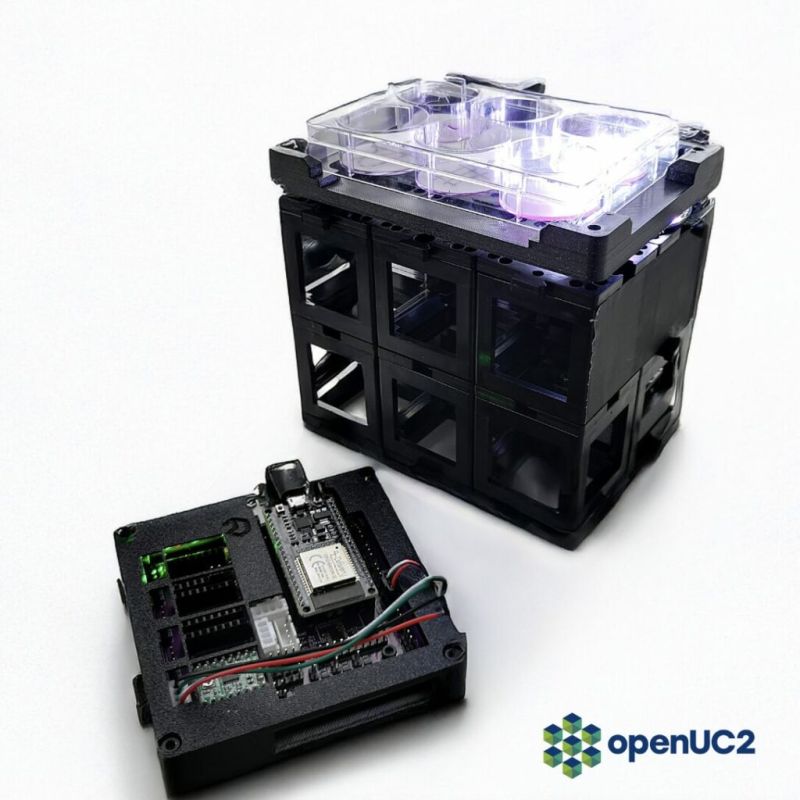Multi‑Camera Capture Demo
This repository shows a minimal Python + OpenCV example that grabs still frames from up to eight USB webcams on Linux. Cameras are opened in pairs (to stay within the USB bus bandwidth limit), a frame is displayed in a 2 × 3 grid, and the handles are released before the next pair is opened.

Requirements
| component | tested version |
|---|---|
| Python | ≥ 3.9 |
| OpenCV | 4.9+ (built with V4L2 support) |
| NumPy | ≥ 1.21 |
| Matplotlib | ≥ 3.6 |
| Linux | kernel 5.* / 6.* with uvcvideo |
Install with mamba env create -f environment.yml or manually:
mamba create -n webcam python=3.11 opencv matplotlib numpy
mamba activate webcam
Quick start
python getimage15_success.py # grabs /dev/video1 … /dev/video8
All open‐error messages ("cam X: open failed", "read failed") are printed to STDOUT.
Why MJPEG?
The problem: “No space left on device”
When many USB‑2 webcams stream raw YUYV 4:2:2 frames, the kernel driver must allocate a large number of in‑flight buffers. Each 640 × 480 frame is 614 kB; at 30 fps even two cameras can exceed the default usbfs_memory_mb limit (16 MB). The V4L2 subsystem then returns -ENOSPC, exposed by FFmpeg / OpenCV as:
[video4linux2,v4l2] ioctl(VIDIOC_STREAMON): No space left on device
The solution: compressed MJPEG
Most UVC cameras can encode Motion‑JPEG in hardware. The bulk data crossing the USB bus – and the temporary kernel buffers – shrink by a factor of 4‑10. For the same two 640 × 480 streams at 80 KiB each, you now need < 5 MB of kernel memory, well below the limit.
“Force MJPEG and it works fine – RAW eats buffer space until
ENOSPC.” — opencv/opencv #23787 citeturn0search0
How to switch to MJPEG
Programmatically (preferred):
cap = cv2.VideoCapture('/dev/video3')
cap.set(cv2.CAP_PROP_FOURCC, cv2.VideoWriter_fourcc(*'MJPG'))Persistently with
v4l2-ctl:sudo v4l2-ctl -d /dev/video3 \
--set-fmt-video=width=640,height=480,pixelformat=MJPGKernel quirk (if the camera ignores MJPG requests):
sudo modprobe -r uvcvideo
sudo modprobe uvcvideo quirks=128 # FIX_BANDWIDTH_QUirk
Script overview (getimage15_success.py)
cam_ids = (2,4,6,8,10,12)– list of device numbers (IMPORTANT This may be different on your system - here it was multiple of two for some reason, 0 was inbuilt webcam)- Loop in steps of 2: open two cameras → grab one frame each → display in grid → release both.
- GUI built with Matplotlib (
plt.subplots(2, 3)). - Uses np.zeros placeholders for empty slots if you have < 6 cameras.
- Press Esc to exit.
Troubleshooting
| symptom | cause | fix |
|---|---|---|
open failed | device busy (another process) | fuser -v /dev/video* then kill |
read failed after a while | cable power loss | use powered hub / USB‑3 port |
| green/pink tint | camera still in YUYV | force MJPG as above |
| high CPU usage | Matplotlib rendering | call plt.pause(0.001) instead of tight sleep |
License
MIT
Acknowledgements
- OpenCV team and contributors.
- Original discussion: https://github.com/opencv/opencv/issues/23787 (thanks to @tph-thuering for the MJPEG hint).